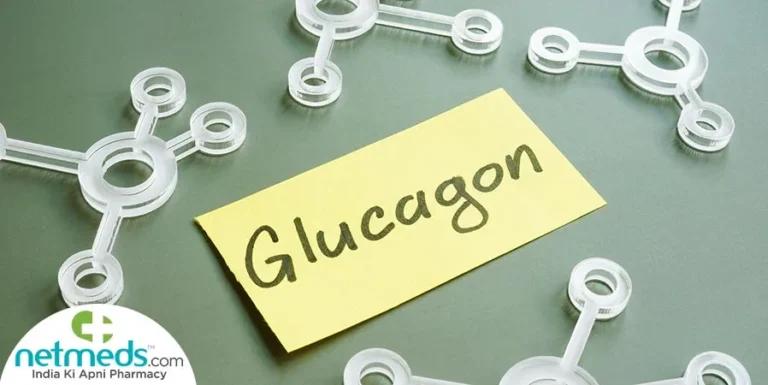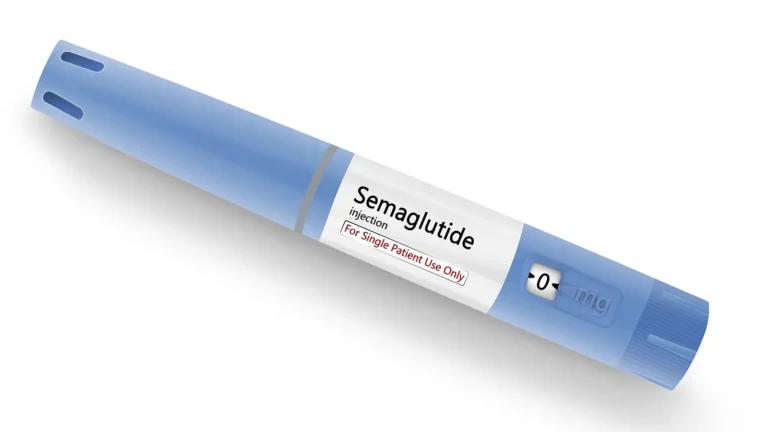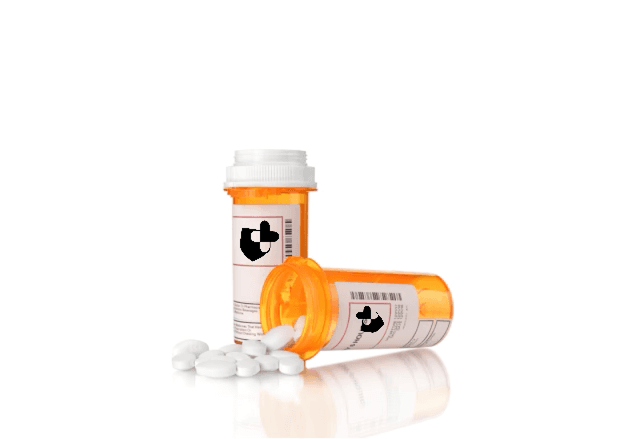The new glucagon-like peptide-1 (GLP-1) agonist by Eli Lilly called Orforglipron is an oral pill that treats weight loss and diabetes. Orforglipron is the first GLP-1 agonist in an oral dosage form which has successfully completed a Phase 3 trials (ACHIEVE-1). Read on to learn more about what Orforglipron is and what its associated benefits are.
Orforglipron 3 mg, 12 mg and 36 mg Tablets – The Leading Oral GLP-1 Agonist

An image of an oral tablet from Eli Lilly, designed for weight management and weight loss, particularly for adults with obesity and related medical problems. This convenient once-daily pill is an oral GLP-1 receptor agonist that aims to regulate blood sugar levels and achieve body weight reduction, potentially offering a safe and effective treatment option for diabetes care.
Orforglipron is an oral GLP-1 agonist made by Eli Lilly and which is due for approval Mid 2026.
It has unique strengths and benefits:
- Significant A1C reduction and weight loss in Type 2 Diabetes (T2D) patients
- Safety profile of Orforglipron 3 mg, 12 mg, and 36 mg Tablets is similar to injectable GLP-1 drugs like Mounjaro or Zepbound
- Orforglipron 3 mg, 12 mg and 36 mg Convenience of daily oral administration
It will likely be available in the following doses:
- Orforglipron 3 mg, 12 mg and 36 mg tablets
Orforglipron’s Significant A1C Reduction and Weight Loss in ACHIEVE-1 Study

Image depicting the action of Orforglipton as a GLP-1 agonist
Price: Will most likely vary by country, health system, and insurance status. However, it is possible the cost will be cheaper than compared to injectable GLP-1 drugs, due to lower costs and ease of manufacture.
Pros:
- Can be taken without food and water restrictions and therefore suitable for those with busy or unpredictable schedules
- Convenient once-daily pill
- lowers A1C by an average of 1.3% to 1.6% from a baseline of 8.0%, compared to placebo at 40 weeks in the ACHIEVE-1 trial
- Significant weight loss results in the ACHIEVE-1 trial, where participants taking orforglipron lost an average of 16.0 lbs (7.9%) at the highest dose. Given that participants had not yet reached a weight plateau at the time the study ended, it appears that full weight reduction was not yet attained.
- If approved, the Eli Lilly is confident that it can be readily manufactured and launched at scale worldwide without supply constraints.
Cons:
- In the United States, the potential of high cost without insurance coverage
- Limited long-term safety data is available for Orforglipron
Rating:
- Price: 3/5
- Convenience: 5/5
- Effectiveness: 4/5
Safety profile of Orforglipron 3 mg, 12 mg, and 36 mg Tablets is similar to injectable GLP-1 drugs like Mounjaro or Zepbound
The overall safety profile of orforglipron in ACHIEVE-1 was consistent with other brands in the established GLP-1 class, such as Wegovy. The most commonly reported adverse events were gastrointestinal-related (GI), and even then, they were generally mild to moderate in severity.
The most common adverse events for participants in the ACHIEVE-1 study, treated with orforglipron (3 mg, 12 mg and 36 mg, respectively) were diarrhea (19%, 21% and 26%) vs. 9% with placebo (a substance that has no therapeutic effect), nausea (13%, 18% and 16%) vs. 2% with placebo, dyspepsia (10%, 20% and 15%) vs. 7% with placebo, constipation (8%, 17% and 14%) vs. 4% with placebo, and vomiting (5%, 7% and 14%) vs. 1% with placebo.
Treatment discontinuation rates in the ACHIEVE-1 study due to adverse events were 6% (orforglipron 3 mg), 4% (orforglipron 12 mg), and 8% (orforglipron 36 mg) vs. 1% with placebo. There were no hepatic (liver) safety signals observed.
Orforglipron 3 mg, 12 mg, and 36 mg Convenience of daily oral administration
Orforglipron, the novel oral GLP-1 receptor agonist by Eli Lilly, offers significant benefits for weight loss through its convenient once-daily pill formulation, eliminating the need for injections commonly associated with similar medications like semaglutide or Wegovy.
The convenience and ease of use of orforglipron will most likely enhance patient adherence and broaden the appeal of GLP-1 therapies to individuals who were previously hesitant about injectable treatments.
Its efficacy in promoting weight reduction, improving glycemic control, and potentially reducing cardiovascular risk factors positions it as a transformative option in obesity management. By lowering barriers to treatment and increasing accessibility, orforglipron is poised to expand the weight loss market significantly, attracting a wider demographic, including those seeking preventative or early-stage interventions for obesity-related conditions.
Is Rybelsus the only currently available weight loss pill?
Rybelsus is not licensed for use as a weight loss medicine, but its active ingredient semaglutide, has been shown to help control appetite by reducing cravings and keeping people feeling fuller for longer.
The only licensed version of semaglutide indicated for weight loss is Wegovy. This is only available in an injectable format.
Choosing the Right Oral GLP-1 Agonist
Selecting the right oral GLP-1 receptor agonist involves considering lifestyle, specific health needs, and personal preferences. For instance, if convenience and minimal side effects are priorities, Orforglipron could prove to be the best choice. Its flexibility without food or water restrictions suits busy schedules, making it an orally active GLP-1 agonist.
For those new to GLP-1 treatments, starting with an easy-to-use format offering sustained effectiveness, like Orforglipron, is a preferable option.
Eli Lilly’s Mounjaro (Zepbound in the United States) continues to stand out as the gold standard for weight loss. Data from clinical trials show that over a 72-week period, 96% of participants taking Mounjaro/Zepbound (on the highest dose) lost 5% or more of their starting body weight. In a similar trial, 84% of people taking Wegovy® on the highest dose lost at least 5% of their body weight.
Summary
- Type: Oral small-molecule GLP-1 receptor agonist.
- Discovered by: Chugai Pharmaceutical Co., Ltd
- Pharmaceutical Manufacturer: Eli Lilly.
- Intended Use: Treatment of obesity and type 2 diabetes.
- Mechanism: Mimics the effects of GLP-1, a hormone that regulates blood sugar and appetite, leading to reduced food intake and improved glucose control.
- Distinction: Unlike injectable GLP-1 drugs (like semaglutide/Wegovy), orforglipron is taken orally, which could make it more accessible and appealing to patients.
- Clinical Trials: As of recent updates, it has shown promising weight loss and blood sugar-lowering effects in phase 2 trials, with phase 3 trials underway.
- Licensed by MHRA in the UK: Pending registration – Estimated Mid 2026
- Licensed by FDA in the US: Pending registration – Estimated Mid 2026
- Licensed by EMA in the EU: Pending registration- Estimated Mid 2026
Frequently Asked Questions
What is the dose titration or escalation for Orforglipron 3 mg, 12 mg, and 36 mg Tablets?
Orforglipron doses will most likely be escalated/titrated like how current GLP-1 doses are escalated/titrated. However, until the licensing application is made by Eli Lilly, we will have to wait to find out about the approved dose escalation/titration.
What makes Orforglipron 3 mg, 12 mg, and 36 mg Tablets convenient for daily use?
Orforglipron 3 mg, 12 mg, and 36 mg Tablets are convenient for daily use because they can be taken at any time without food or water restrictions, providing flexibility for individuals with busy lifestyles.
Is orforglipron available in the UK?
Orforglipron 3 mg, 12 mg, and 36 mg Tablets are not yet licensed, approved, or available to the public in the UK. It is expected to be licensed by the MHRA in mid-2026.
Is orforglipron available in the US?
Orforglipron 3 mg, 12 mg, and 36 mg Tablets are not yet licensed, approved, or available to the public in the US. It is expected to be licensed by the FDA in mid-2026.
Are there any common side effects associated with Orforglipron 3 mg, 12 mg, and 36 mg Tablets?
Common side effects of Orforglipron 3 mg include mild nausea and diarrhea, while severe side effects occur less frequently compared to other GLP-1 agonists.
Why is Eli Lilly’s Mounjaro considered comprehensive for treatment?
Eli Lilly’s Mounjaro or Zepbound is considered comprehensive for treatment because it effectively manages both weight loss and diabetes while also offering potential cardiovascular benefits, addressing multiple health concerns simultaneously..
What factors should I consider when choosing an oral GLP-1 agonist?
When selecting an oral GLP-1 agonist, it is essential to consider your lifestyle, existing health conditions, and personal preferences. Collaborating with a NowPatient weight management clinician will ensure the choice aligns well with your individual needs.
Medical Disclaimer
NowPatient has taken all reasonable steps to ensure that all material is factually accurate, complete, and current. However, the knowledge and experience of a qualified healthcare professional should always be sought after instead of using the information on this page. Before taking any drug, you should always speak to your doctor or another qualified healthcare provider.
The information provided here about medications is subject to change and is not meant to include all uses, precautions, warnings, directions, drug interactions, allergic reactions, or negative effects. The absence of warnings or other information for a particular medication does not imply that the medication or medication combination is appropriate for all patients or for all possible purposes.
















